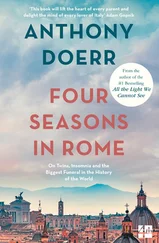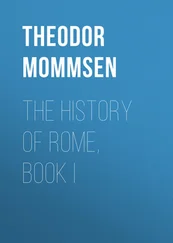Theodor Mommsen - The History of Rome. Book III
Здесь есть возможность читать онлайн «Theodor Mommsen - The History of Rome. Book III» весь текст электронной книги совершенно бесплатно (целиком полную версию без сокращений). В некоторых случаях можно слушать аудио, скачать через торрент в формате fb2 и присутствует краткое содержание. Жанр: История, Культурология, на английском языке. Описание произведения, (предисловие) а так же отзывы посетителей доступны на портале библиотеки ЛибКат.
- Название:The History of Rome. Book III
- Автор:
- Жанр:
- Год:неизвестен
- ISBN:нет данных
- Рейтинг книги:5 / 5. Голосов: 1
-
Избранное:Добавить в избранное
- Отзывы:
-
Ваша оценка:
- 100
- 1
- 2
- 3
- 4
- 5
The History of Rome. Book III: краткое содержание, описание и аннотация
Предлагаем к чтению аннотацию, описание, краткое содержание или предисловие (зависит от того, что написал сам автор книги «The History of Rome. Book III»). Если вы не нашли необходимую информацию о книге — напишите в комментариях, мы постараемся отыскать её.
The History of Rome. Book III — читать онлайн бесплатно полную книгу (весь текст) целиком
Ниже представлен текст книги, разбитый по страницам. Система сохранения места последней прочитанной страницы, позволяет с удобством читать онлайн бесплатно книгу «The History of Rome. Book III», без необходимости каждый раз заново искать на чём Вы остановились. Поставьте закладку, и сможете в любой момент перейти на страницу, на которой закончили чтение.
Интервал:
Закладка:
61.III. V. Fabius and Minucius.
62.II. I. The Dictator.
63.III. XI. Election of Officers in the Comitia.
64.III. V. Flaminius, New Warlike Preparations in Rome.
65.III. V. Fabius and Minucius.
66.III. XI. Squandering of the Spoil.
67.III. VI. Publius Scipio.
68.III. VI. The African Expedition of Scipio.
69.III. X. Humiliation of Rhodes.
70.II. II. Agrarian Law of Spurius Cassius.
CHAPTER XII
The Management of Land and of Capital
1.In order to gain a correct picture of ancient Italy, it is necessary for us to bear in mind the great changes which have been produced there by modern cultivation. Of the cerealia , rye was not cultivated in antiquity; and the Romans of the empire were astonished to rind that oats, with which they were well acquainted as a weed, was used by the Germans for making porridge. Rice was first cultivated in Italy at the end of the fifteenth, and maize at the beginning of the seventeenth, century. Potatoes and tomatoes were brought from America; artichokes seem to be nothing but a cultivated variety of the cardoon which was known to the Romans, yet the peculiar character superinduced by cultivation appears of more recent origin. The almond, again, or "Greek nut", the peach, or "Persian nut", and also the "soft nut" ( nux mollusca ), although originally foreign to Italy, are met with there at least 150 years before Christ. The date-palm, introduced into Italy from Greece as into Greece from the East, and forming a living attestation of the primitive commercial-religious intercourse between the west and the east, was already cultivated in Italy 300 years before Christ (Liv. x. 47; Pallad. v. 5, 2; xi. 12, i) not for its fruit (Plin. H. N. xiii. 4, 26), but, just as in the present day, as a handsome plant, and for the sake of the leaves which were used at public festivals. The cherry, or fruit of Cerasus on the Black Sea, was later in being introduced, and only began to be planted in Italy in the time of Cicero, although the wild cherry is indigenous there; still later, perhaps, came the apricot, or "Armenian plum". The citron-tree was not cultivated in Italy till the later ages of the empire; the orange was only introduced by the Moors in the twelfth or thirteenth, and the aloe (Agave Americana) from America only in the sixteenth, century. Cotton was first cultivated in Europe by the Arabs. The buffalo also and the silkworm belong only to modern, not to ancient Italy.
It is obvious that the products which Italy had not originally are for the most part those very products which seem to us truly "Italian"; and if modern Germany, as compared with the Germany visited by Caesar, may be called a southern land, Italy has since in no less degree acquired a "more southern" aspect.
2.II. III. Licinio-Sextian Laws.
3.According to Cato, de R. R, 137 (comp. 16), in the case of a lease with division of the produce the gross produce of the estate, after deduction of the fodder necessary for the oxen that drew the plough, was divided between lessor and lessee ( colonus partiarius ) in the proportions agreed upon between them. That the shares were ordinarily equal may be conjectured from the analogy of the French bail a cheptel and the similar Italian system of half-and-half leases, as well as from the absence of all trace of any other scheme of partition. It is erroneous to refer to the case of the politor , who got the fifth of the grain or, if the division took place before thrashing, from the sixth to the ninth sheaf (Cato, 136, comp. 5); he was not a lessee sharing the produce, but a labourer assumed in the harvest season, who received his daily wages according to that contract of partnership (III. XII. Spirit of the System).
4.The lease lirst assumed real importance when the Roman capitalists began to acquire transmarine possessions on a great scale; then indeed they knew how to value it, when a temporary lease was continued through several generations (Colum. i. 7, 3).
5.That the space between the vines was occupied not by grain, but only at the most by such fodder plants as easily grew in the shade, is evident from Cato (33, comp. 137), and accordingly Columella (iii. 3) calculates on no other accessory gain in the case of a vineyard except the produce of the young shoots sold. On the other hand, the orchard ( arbustum ) was sown like any corn field (Colum. ii. 9, 6). It was only where the vine was trained on living trees that corn was cultivated in the intervals between them.
6.Mago, or his translator (in Varro, R. R., i. 17, 3), advises that slaves should not be bred, but should be purchased not under 22 years of age; and Cato must have had a similar course in view, as the personal staff of his model farm clearly shows, although he does not exactly say so. Cato (2) expressly counsels the sale of old and diseased slaves. The slave-breeding described by Columella (I. I. Italian History), under which female slaves who had three sons were exempted from labour, and the mothers of four sons were even manumitted, was doubtless an independent speculation rather than a part of the regular management of the estate - similar to the trade pursued by Cato himself of purchasing slaves to be trained and sold again (Plutarch, Cat. Mai. 21). The characteristic taxation mentioned in this same passage probably has reference to the body of servants properly so called ( familia urbana ).
7.In this restricted sense the chaining of slaves, and even of the sons of the family (Dionys. ii. 26), was very old; and accordingly chained field-labourers are mentioned by Cato as exceptions, to whom, as they could not themselves grind, bread had to be supplied instead of grain (56). Even in the times of the empire the chaining of slaves uniformly presents itself as a punishment inflicted definitively by the master, provisionally by the steward (Colum. i. 8; Gai. i. 13; Ulp. i. ii). If, notwithstanding, the tillage of the fields by means of chained slaves appeared in subsequent times as a distinct system, and the labourers' prison ( ergastulum ) - an underground cellar with window-aperatures numerous but narrow and not to be reached from the ground by the hand (Colum. i. 6) - became a necessary part of the farm-buildings, this state of matters was occasioned by the fact that the position of the rural serfs was harder than that of other slaves and therefore those slaves were chiefly taken for it, who had, or seemed to have, committed some offence. That cruel masters, moreover, applied the chains without any occasion to do so, we do not mean to deny, and it is clearly indicated by the circumstance that the law-books do not decree the penalties applicable to slave transgressors against those in chains, but prescribe the punishment of the half-chained. It was precisely the same with branding; it was meant to be, strictly, a punishment; but the whole flock was probably marked (Diodor. xxxv. 5; Bernays, Phokytides , p. xxxi.).
8.Cato does not expressly say this as to the vintage, but Varro does so (I. II. Relation of the Latins to the Umbro-Samnites), and it is implied in the nature of the case. It would have been economically an error to fix the number of the slaves on a property by the standard of the labours of harvest; and least of all, had such been the case, would the grapes have been sold on the tree, which yet was frequently done (Cato, 147).
9.Columella (ii. 12, 9) reckons to the year on an average 45 rainy days and holidays; with which accords the statement of Tertullian (De Idolol. 14), that the number of the heathen festival days did not come up to the fifty days of the Christian festal season from Easter to Whitsunday. To these fell to be added the time of rest in the middle of winter after the completion of the autumnal bowing, which Columella estimates at thirty days. Within this time, doubtless, the moveable "festival of seed-sowing" ( feriae sementivae ; comp. i. 210 and Ovid. Fast, i. 661) uniformly occurred. This month of rest must not be confounded with the holidays for holding courts in the season of the harvest (Plin. Ep. viii. 21, 2, et al.) and vintage.
Читать дальшеИнтервал:
Закладка:
Похожие книги на «The History of Rome. Book III»
Представляем Вашему вниманию похожие книги на «The History of Rome. Book III» списком для выбора. Мы отобрали схожую по названию и смыслу литературу в надежде предоставить читателям больше вариантов отыскать новые, интересные, ещё непрочитанные произведения.
Обсуждение, отзывы о книге «The History of Rome. Book III» и просто собственные мнения читателей. Оставьте ваши комментарии, напишите, что Вы думаете о произведении, его смысле или главных героях. Укажите что конкретно понравилось, а что нет, и почему Вы так считаете.








